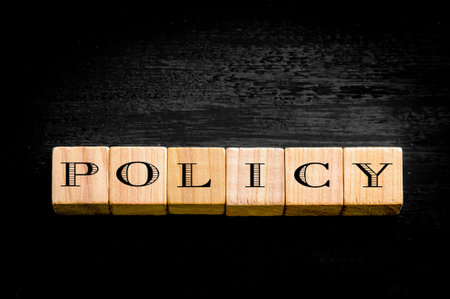1. Understanding Add-ons and Endorsements
When it comes to car insurance, most drivers are familiar with standard collision and comprehensive coverage. However, your policy doesn’t have to be one-size-fits-all. That’s where add-ons and endorsements come in. These optional extras allow you to tailor your insurance plan by expanding or refining the protection it offers. In simple terms, an add-on or endorsement is a modification or extension to your basic policy—think of it as a way to plug gaps or boost your coverage for specific situations. For example, if you want rental reimbursement after an accident, or you need coverage for custom parts and equipment, these enhancements can help. Understanding how they work is crucial because not all damages or scenarios are automatically covered by standard policies. If you miss out on the right add-on, you could face a denial of claim when you need help most. By learning what options are available and why they matter, you’ll be better equipped to protect both your vehicle and your wallet.
2. Popular Add-ons to Consider
When customizing your collision and comprehensive auto insurance in the U.S., several popular add-ons can make a real difference in your day-to-day driving experiences and financial protection. Choosing the right endorsements helps you avoid common coverage gaps that might lead to denied claims during stressful situations. Let’s explore some of the most sought-after options, complete with everyday examples.
Commonly Chosen Add-ons
| Add-on | What It Covers | Everyday Example |
|---|---|---|
| Rental Reimbursement | Pays for a rental car while your vehicle is being repaired after a covered accident. | Your car gets rear-ended at a stoplight; while it’s in the shop for two weeks, your insurer covers the cost of a rental vehicle so you can still get to work. |
| Gap Coverage | Covers the “gap” between what you owe on your loan/lease and your car’s actual cash value if it’s totaled. | You finance a new SUV, and after six months it’s totaled in a storm. The insurance payout is less than your outstanding loan balance—gap coverage pays the difference so you’re not stuck with debt for a car you no longer have. |
| Roadside Assistance | Helps with towing, battery jump-starts, flat tires, fuel delivery, and lockouts. | Your tire blows out on the highway or you accidentally lock your keys inside; roadside assistance sends help quickly, saving you time and stress. |
| New Car Replacement | If your new car is totaled within a certain period (usually 1-2 years), this pays for a brand-new replacement instead of depreciated value. | Your one-year-old sedan is stolen and unrecovered; instead of getting less due to depreciation, you receive enough to buy a brand-new model of the same make and trim. |
Why Drivers Choose These Endorsements
American drivers often select these add-ons because they address real-world scenarios that standard policies may not fully cover. For instance, without rental reimbursement, you could be left paying out-of-pocket for transportation during repairs—a cost that adds up fast. Similarly, gap coverage is especially crucial for those with low down payments or long-term loans, as cars depreciate rapidly in their first years. Roadside assistance delivers peace of mind on daily commutes or road trips, ensuring help is just a call away. Finally, new car replacement protects against financial loss from quick depreciation if disaster strikes early in your vehicle ownership.
Reminder: Not All Add-ons Are Created Equal!
It’s important to read the fine print—coverage limits, eligibility periods, and exclusions vary by insurer. For example, rental reimbursement usually has daily maximums and total payout caps; failing to understand these details could leave you paying more than expected if an accident occurs. Always confirm specifics with your agent before relying on any endorsement for full protection.
![]()
3. Customizing Coverage Based on Your Needs
When it comes to collision and comprehensive insurance, a one-size-fits-all approach rarely offers the best protection. The good news? Add-ons and endorsements give you the flexibility to shape your policy around your unique lifestyle, driving habits, and vehicle type. For example, if you commute long distances or drive in areas prone to severe weather, roadside assistance or rental car reimbursement can be invaluable. On the other hand, drivers who own high-value vehicles might want gap coverage or new car replacement endorsements to shield against major losses.
Consider how often and where you drive—urban traffic may call for different protections than rural highways. Families might benefit from increased liability limits or personal injury protection add-ons, while classic car owners could look into agreed value endorsements to avoid disputes over market depreciation. It’s also smart to review any custom parts or aftermarket upgrades on your vehicle; standard policies may exclude these unless you specifically endorse them. Remember, insurance companies can deny claims for uncovered items or situations not listed in your policy, so don’t assume basic coverage is enough.
Ultimately, customizing your policy means thinking beyond price. Review your daily routines, risk tolerance, and what matters most to you behind the wheel. Consult with your insurance agent about which endorsements make sense for your situation—and always double-check what’s excluded from each option. That way, you’re not just insured—you’re protected in a way that genuinely fits your life.
4. Common Exclusions and Limitations
While add-ons and endorsements can significantly enhance your collision and comprehensive policy, it’s crucial to understand that they don’t provide blanket coverage for every scenario. Each endorsement comes with its own set of exclusions and limitations, which may leave certain gaps in your protection. Overlooking these details could result in a denied claim just when you need coverage the most.
Highlighting Typical Exclusions
Many policyholders assume that once they purchase an add-on or endorsement, they’re fully protected. However, insurers often include specific situations or types of losses that aren’t covered. Here are some common exclusions you might encounter:
| Add-On/Endorsement | Common Exclusions |
|---|---|
| Rental Reimbursement | No coverage if your car isn’t in the shop for a covered loss (e.g., breakdowns, routine maintenance) |
| Gap Insurance | No coverage if you lease/buy from a private party or the loan isn’t through a qualified lender |
| Custom Parts & Equipment Coverage | No coverage for wear and tear or if modifications aren’t disclosed beforehand |
| Roadside Assistance | No coverage for repeated service calls within a short period or non-emergency tows |
The Fine Print Matters
Insurance policies are full of details that matter when it comes time to file a claim. For example, some endorsements only apply if you follow certain procedures—such as notifying your insurer immediately after an incident or using approved repair shops. Ignoring these requirements, even unintentionally, can give your insurer grounds to deny your claim.
Real-World Example: Denied Claims Due to Misunderstanding Exclusions
Consider this scenario: You purchase roadside assistance as an add-on but don’t realize there’s a limit on how many times you can use it each year. After exceeding the limit, you call again—only to find out you’ll have to pay out of pocket because your policy no longer applies for additional incidents.
Key Takeaway: Always Read the Policy Details
The best way to avoid surprises is to carefully read through the terms and conditions of each add-on and endorsement. Ask your agent specific questions about what’s excluded and what documentation is needed at claims time. Knowing the limitations upfront will help ensure you get the protection you expect—without unwelcome denials.
5. Steps to Add or Modify Endorsements
Making changes to your auto insurance policy through add-ons and endorsements can be straightforward if you follow the right steps. Whether you want to enhance your coverage with new endorsements or remove unnecessary ones, staying proactive helps ensure that you’re never left exposed due to a coverage lapse.
Review Your Current Policy
Start by carefully reviewing your current collision and comprehensive policy documents. Identify which endorsements you already have and consider if there are gaps in your protection. For example, maybe you recently financed a car and now need GAP insurance, or perhaps your circumstances have changed and certain add-ons are no longer necessary.
Contact Your Insurance Agent or Provider
Reach out directly to your insurance agent or carrier—either by phone, online portal, or visiting a local office. Ask specific questions about available endorsements, premium changes, and how each will affect your overall protection. Remember: some endorsements may only be added at renewal or within certain timeframes after major life events like buying a new vehicle.
Submit a Formal Request
Once you’ve decided on the changes, submit a formal request to add, modify, or remove endorsements. Most insurers will require written confirmation via email, an online form, or signed documents. Be clear about the effective date of the change—mistiming can result in lapses or overlapping coverage periods that might cause claim denials later.
Watch Out for Coverage Gaps!
If you’re swapping out one endorsement for another (like changing from rental reimbursement to roadside assistance), ask when each change takes effect. Sometimes there’s a waiting period before new coverages activate. Always get confirmation in writing and double-check your declarations page once updates are processed.
Timelines & Processing Tips
Additions often go into effect immediately or within 24 hours; removals may take until the next billing cycle. To avoid surprises, set reminders around policy renewal dates and review all correspondence from your insurer for accuracy. If you don’t see changes reflected promptly, follow up to prevent unintentional coverage gaps that could lead to denied claims down the road.
Keep Documentation
Save every email, letter, and updated policy document relating to your endorsement changes. Should a claim arise soon after a modification, having proof of when changes were requested and processed is critical for smooth claims handling—and can help resolve disputes if the insurer challenges your coverage status.
6. Claims Process and Best Practices
Step-by-Step Guide to Filing a Claim with Add-Ons and Endorsements
When you need to file a claim involving your collision or comprehensive policy enhancements, such as add-ons or endorsements, accuracy is everything. Start by reviewing your policy documents to confirm which coverages apply—don’t rely on memory. Next, promptly contact your insurance provider to report the incident; delays can complicate the process. Be prepared to provide detailed documentation: photos of the damage, police reports (if applicable), receipts for any aftermarket parts or customizations covered by endorsements, and proof of ownership. Your insurer may require additional evidence for specific add-ons, such as pet injury coverage or rental reimbursement, so gather supporting documents like vet bills or rental car contracts. Always follow your insurer’s instructions carefully and keep records of all communications.
Common Mistakes That Lead to Claim Denials
Many claims are denied not because the damage isn’t covered, but due to avoidable mistakes. The most frequent error is failing to disclose modifications or add-ons when you initially purchased or updated your policy—undisclosed upgrades may be excluded from coverage. Another pitfall is missing deadlines for reporting an accident or submitting documentation; most insurers have strict timelines that must be met. Incomplete paperwork is also a major issue: if you’re missing invoices for custom equipment or haven’t provided proof of loss, expect delays or denials. Finally, some drivers assume that every incident is covered under every endorsement—read the fine print! For example, if your roadside assistance add-on doesn’t include towing after an accident, filing for that benefit will be rejected.
Best Practices to Maximize Your Benefits
To ensure a smooth claims process and minimize surprises, always update your insurer about new vehicle modifications and keep clear records of all enhancements covered under your policy. Review your endorsements annually so you understand what’s included—and what isn’t. When in doubt, call your agent before making changes or filing a claim. Being proactive and detail-oriented means you’re more likely to get the benefits you’ve paid for and less likely to face denial when it matters most.

